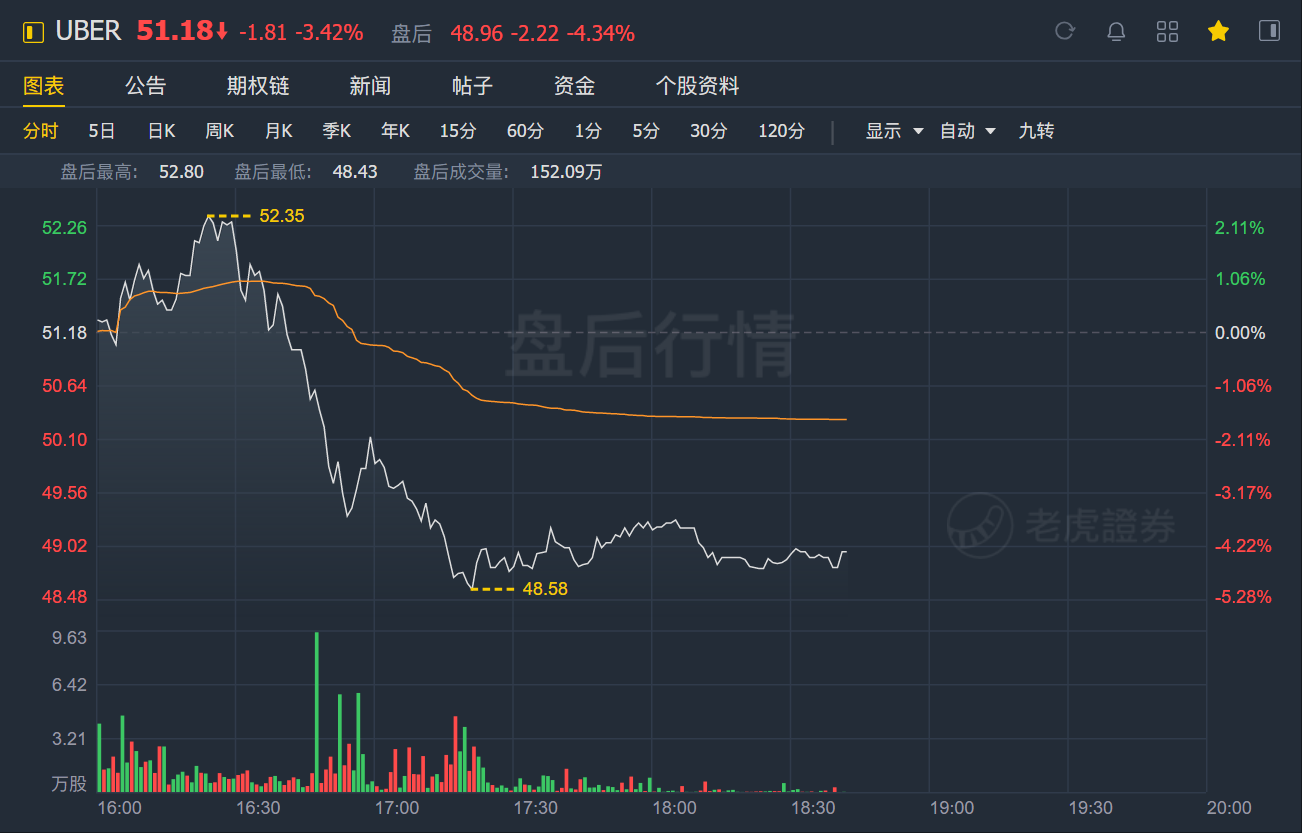Uberbeat estimates on the top line and dramatically improved its net losses in itsfirst quarterbut missed on revenue.
Shares initially gained in after-hours trading before dipping more than 4.5%.
- Loss:6 cents vs. 54 cents expected, according to a consensus of analysts surveyed by Refinitiv.
- Revenue:$2.90 billion vs. $3.29 billion expected per Refinitiv.

Overall, Uber’s net loss was $108 million, a tremendous improvement from a $968 million loss in its fourth quarter of 2020. But that was largely due to a $1.6 billion gain from thesale of its self-driving unit, ATG. Uber’s operating loss was still high for the quarter at more than $1.5 billion.
Uber reaffirmed its expectation to reach profitability on an adjusted EBITDA basis by the end of this year.
Its adjusted EBITDA loss was $359 million, which improved by $95 million from the prior quarter. EBITDA refers to earnings before interest, taxes, depreciation and amortization.
The company said its mobility take rate is expected to decline about 20% in the second quarter.
“For the remainder of the year, I would remind you that delivery gross bookings year-over-year comparisons will become tougher as we continue to face significant forecasting uncertainty in predicting post-reopening consumer behavior,” CFO Nelson Chai said on a call with investors.
Here’s how Uber’s largest business segments performed in the first quarter of 2021:
- Mobility (gross bookings): $6.77 billion, down 38% from a year ago
- Delivery (gross bookings): $12.46 billion, up 166% from a year ago
Delivery revenue also outperformed its core ride-hailing business at $1.7 billion, compared with $853 million. The company has relied on its delivery services to make up for lost transit during the pandemic. Uber said the Eats segment revenue was up 28% quarter over quarter.
“We’re finally seeing the light at the end of the tunnel,” CEO Dara Khosrowshahi said on a call with investors. “Uber is starting to fire on all cylinders, as more consumers are riding with us again while continuing to use our expanding delivery offerings.”
In an update to shareholders, the company said that merchants on Uber Eats exceeded 700,000 in the first quarter, with the additions of Mr. Beast Burger,Rite Aidand Smoothie King.
The company also entered into an agreement with Gopuff to offer more convenience-store and grocery items starting in June.
Ride-hailing trends are starting to improve in some markets, Khosrowshahi said, adding he’s “optimistic this trend should accelerate going forward.”
Uber is also facing an immediate and growing need for more drivers, struggling to meet demand following Covid vaccines and an easing of restrictions. The company said last month it would spend $250 million on a one-time stimulusaimed at getting drivers back on the road. If it can’t bring in enough drivers to meet demand, the company could face annoyed customers who are having to shell out more cash or it might even have to put out more incentives.
Uber said it has approximately 3.5 million drivers and couriers on its platform, up 4% quarter over quarter but still down 22% year over year.
Trips on the platform were flat quarter over quarter at 1.45 billion and 13% below the same quarter a year ago. The company said its continued growth in delivery trips is offsetting declines in its mobility unit.
Uber also faced pressure during the quarter in the U.K. after the nation’s Supreme Courtupheld a rulingthat its drivers are workers, not independent contractors.
The company said it took a $600 million hit to ride-hailing revenue “due to the accrual made for the resolution of historical claims in the UK relating to the classification of drivers.”
Classifying drivers as contractors allows the companies to avoid the costly benefits associated with employment, such as unemployment insurance. If a similar measure ends up passing in the United States, it could make it harder for them to reach profitability.
Executives said they believe there’s space in the Biden-Harris administration to have an open dialogue.
Comments